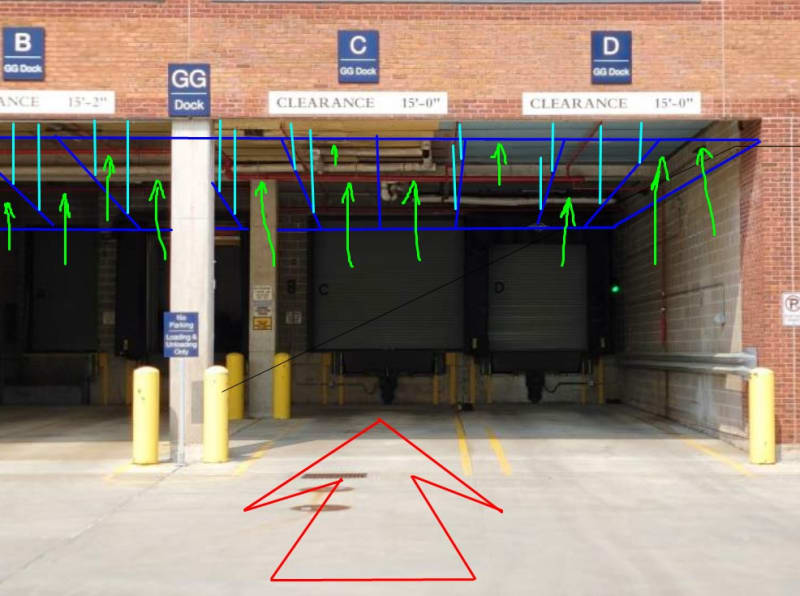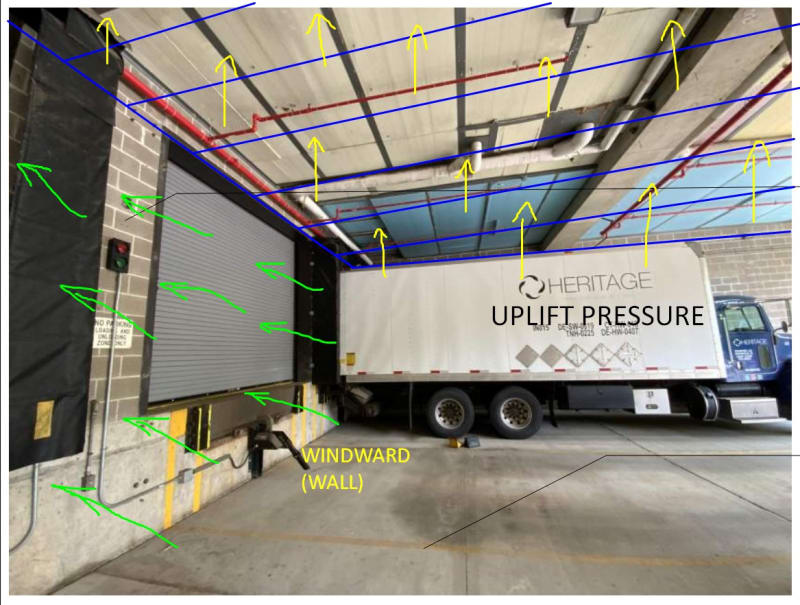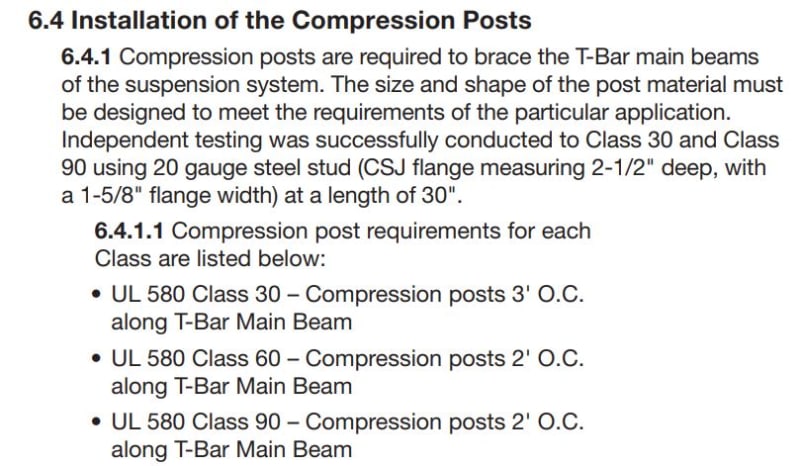Daniel Roberto Morales Contrer
Structural
hello to everyone this is my first post am glad to be part of the community , i have to check a hanging ceiling it will be attached to a slab concrete by a lot of ø3/8 RB Vertical rods, i need help with the calculation of the uplift wind pressure on that zone i will attach a photo, the blue lines represents the ceiling and the rods, the red arrow represents the wind direction and the green arrows repressents the wind pressure, i have been studying the components and claddings chapter on ASCE 7-16 but i am not sure
thanks!

thanks!



